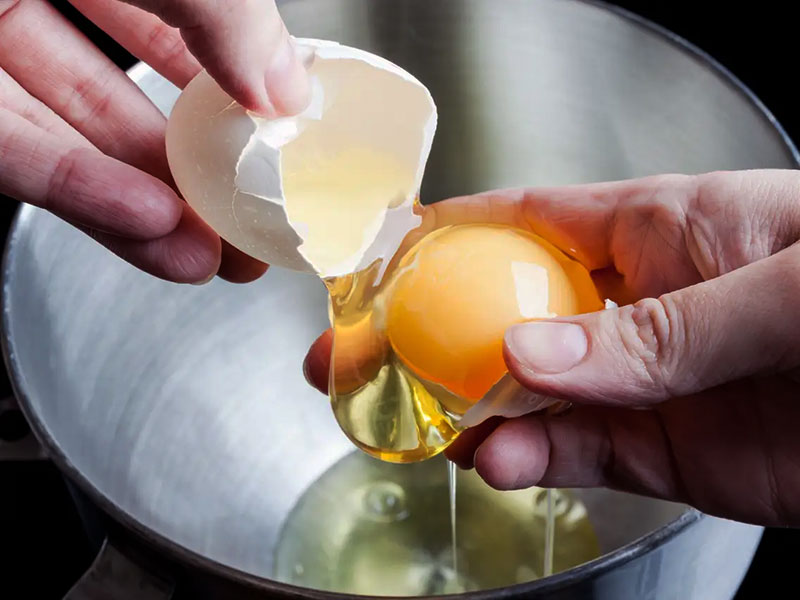Parvaneh Insaf Dost / Quality Control Manager of Pamin Industrial Group / Microbiology Expert / Senior Management Expert
As an integral part of the daily life of humanity, eggs are one of the most widely consumed food products. But in addition to its practicality, it has always had challenges for its consumers.
Food industries such as confectionery and chocolate are major consumers of egg liquid every day, and providing it in a hygienic and free of any contamination has become a big challenge for them.
In this note, the advantages and disadvantages of using pasteurized eggs in the food industry have been discussed.
The use of eggs in the food industry in the form of manual breaking
1- High costs of breaking and separating yolk and white
2- Creation in egg liquid
3- A lot of product waste
4- Creating an environment in the factory (empty shells)
5- Existence of production plans in the product
6- Daily preparation and supply of eggs
7- Creation of eggs

The disadvantages of using eggs in the food industry are centrifuged
1- Severe body due to contact with the shell
2- Impossibility of separating yolk and white
3- The growth of bacteria is produced due to the strong mixing of the liquid with air and also the high temperature of the liquid
The importance of pasteurization in eggs
Salmonella has been known as the cause of intestinal disease for years and can be reported as the most important cause of food poisoning (more than 40% of cases). In recent years, poisons caused by this chicken have been observed in large numbers and by transmission through eggs. All members of society, especially young and elderly people, are at risk of salmonella.
Hockey reports that more than 1.4 million people get this disease every year.
The Food Safety Commission in the United States decided to eliminate salmonella disease, which is caused by eggs, by 50% by 2005 and to create it completely by 2010, and to achieve this goal, pasteurization of eggs in industries. that use eggs should be required. This has been noticed in many other cases from Japan, and the consumption of chicken meat is recommended, especially in vulnerable areas of hospitals, nursing homes, nurseries, and general treatment for children and people over 55 years of age. Is.

Egg pasteurization set
1- Removing pathogenic agents and producing a hygienic product free from other microbes (Salmonella, coliforms, Escherichia coli, Staphylococcus aureus, yeasts and molds, and pathogenic viruses of poultry)
2- The quality of pasteurized chicken liquid is similar to that of fresh eggs in terms of its nutritional value, taste and properties, and these properties remain constant during storage.
3- The general population from the reduction of egg wastage, the reduction of the cost of breaking, maintenance, storage and internal transportation, the costs of disposal of waste (shells, cartons and combs), the reduction of the costs of the sanitary factory in terms of disinfection in halls and warehouses.
4- Development of storage space in the factory and ease of movement
5- Ease of use
6- High maintainability
7- Uniformity of the product used
The optimal time to consume pasteurized egg products in refrigerated conditions
Complete pasteurized egg liquid, the optimal time for consumption is 7 days
Pasteurized egg yolk optimal time for use is 7 days
Pasteurized egg white optimal time for consumption is 10 days
quality control
It should be noted that all stages of egg processing, from the arrival of the chicken, various stages of processing, packaging and use, are strictly monitored by the quality control unit, and daily microbial and chemical tests are performed on the products.
Currently, Pamin Industrial Group is the largest processing and production unit of pasteurized and homogenized liquid and egg white powder and egg yolk in Iran and the region, which is the main supplier of pasteurized egg liquid from prominent brands in the Iranian food industry.


